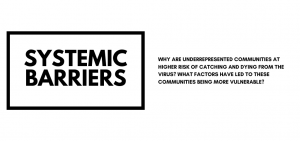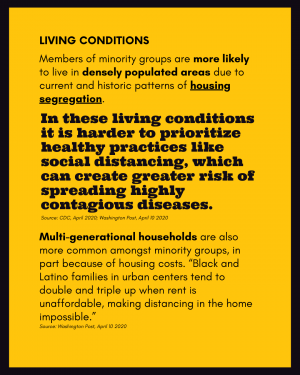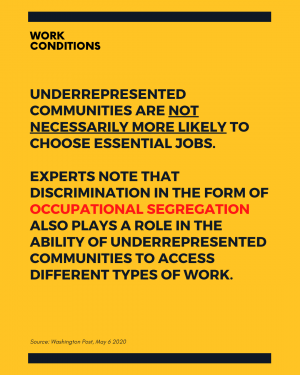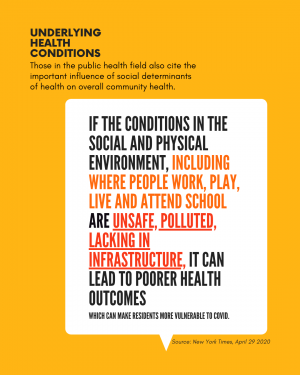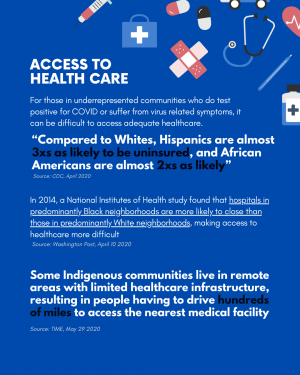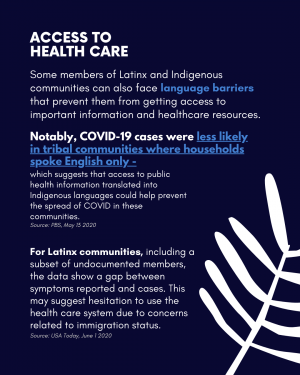In addition to experiencing disproportionately negative effects from the virus, systemic barriers have increased the severity of these effects across underrepresented minority communities. We have highlighted inequalities within four key areas: (1) living conditions, (2) working conditions, (3) underlying health conditions, and (4) access to healthcare (CDC 2020). Recognizing the role that institutionalized barriers play in the spread of the virus and the high mortality rate of these communities ensures a more complete understanding of the causes and consequences of these trends, which does not blame communities for their own vulnerabilities. It also shifts the analysis beyond solely individual decisions and behaviors and takes into account “... societal policies, driven by institutional racism, that are producing the results they were intended to produce”, Dr. Williams, chairman of Social and Behavioral Sciences, Harvard (New York Times, April 2020).
Now that you have the facts on the unequal impacts of COVID-19 on underrepresented communities, join us tomorrow on Day 4 where we will highlight efforts to address these inequalities.
All sources can be found on linktr.ee/UCSBBlumCenter. This student-led information campaign is part of the Blum Center’s annual Poverty Action Week events.
Originally posted 6/3/20, Updated 6/17/20.

